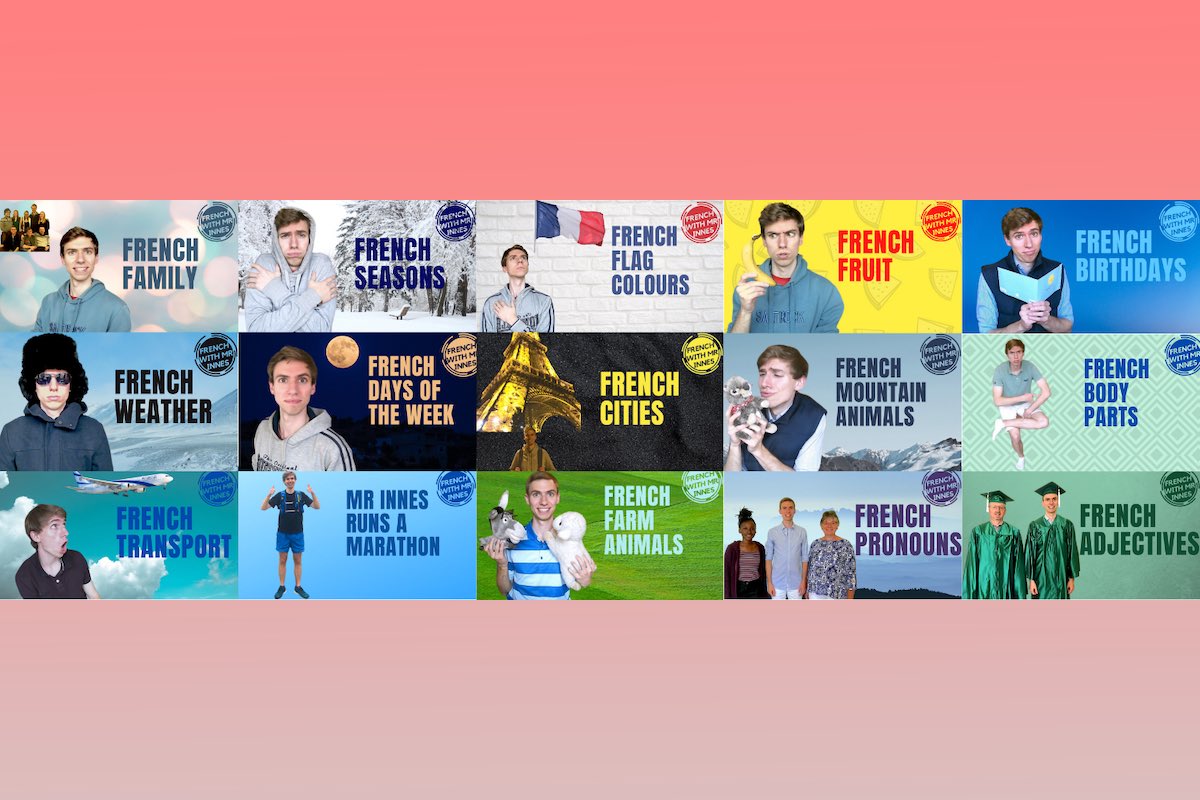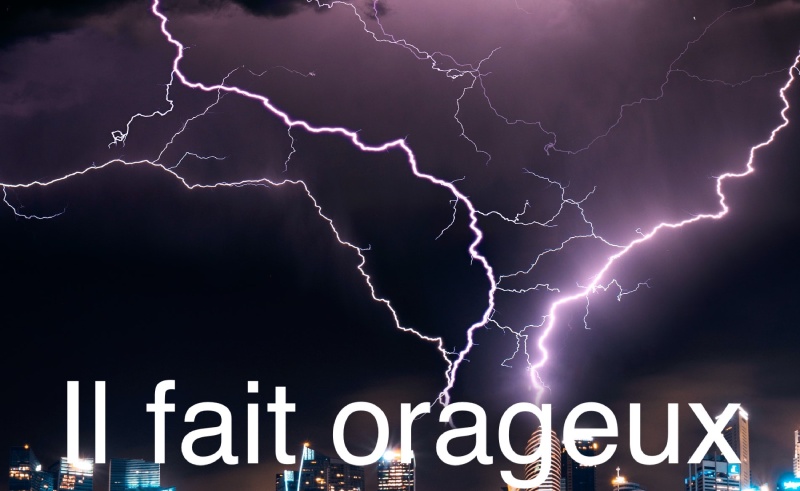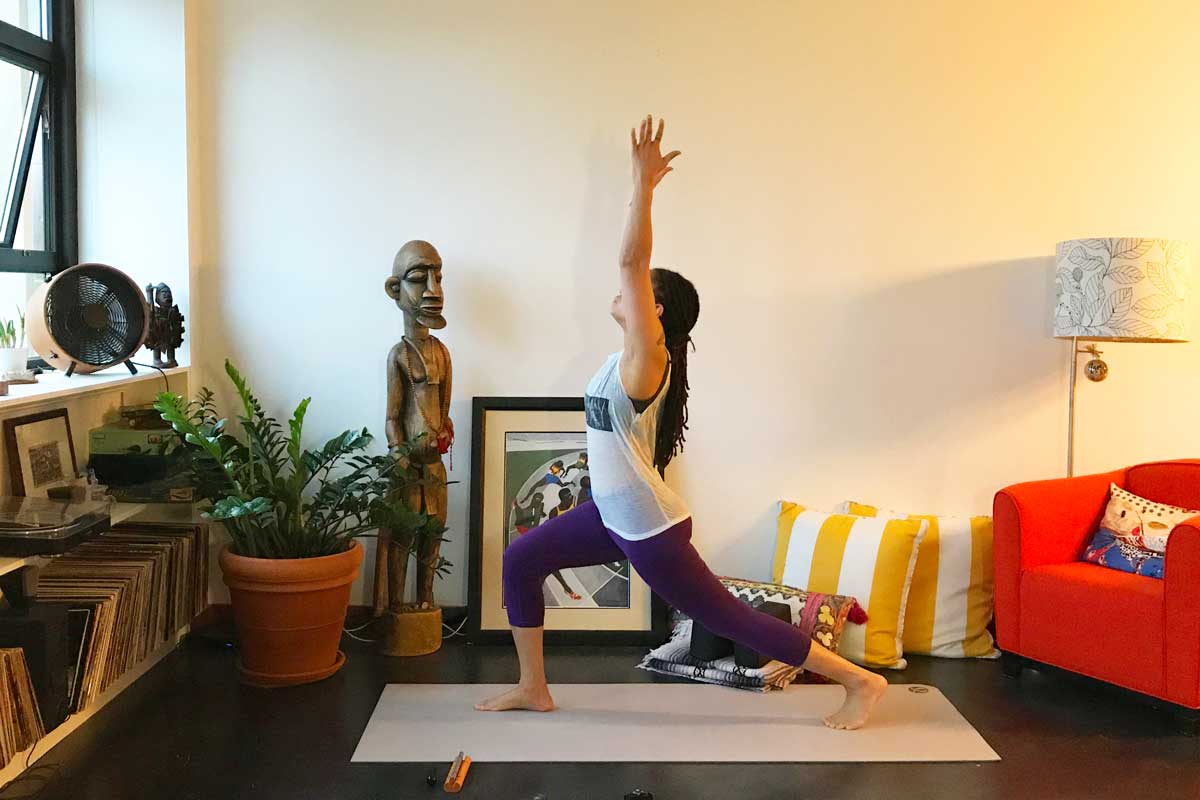Can We Learn Languages Remotely? Oui!

Remote teaching is filled with both numerous challenges and an endless list of creative possibilities, but does that include learning a world language? Well, the answer to that is yes, as we have witnessed first hand during a forced experiment of online learning during the pandemic.
Online teaching of languages can be especially dynamic and effective if we employ many of those creative possibilities. Parents, caregivers, students, and teachers quickly found the switch to online learning to be tricky; but when it is the only choice, you get creative. And creative I did get! My experience of creating the YouTube channel, ‘French with Mr Innes’, at the beginning of lockdown, is that of an entertaining and visual approach to language learning that can potentially offer more to children than in-person teaching and learning.
French with Mr Innes launched on YouTube in April 2020 with the aim of helping French beginners to learn from home. I began with 5-minute videos using fairly basic technology with the aim of reaching just the children between the ages of 5 and 11 in my school. By the time of the summer holidays, I had produced a 40-day French Basics series complete with 10-15-minute videos that were accessible to viewers across the globe. New technology, the discovery of excellent non-copyright image websites to embed graphic images, a more entertaining on-camera approach and an effective methodology helped thousands of learners to not only review, but also advance in learning French. It was personally rewarding to hit the benchmark of 1000 subscribers in less than three months and 3000 subscribers in just six months time. Many teachers offered words of encouragement, with occasional suggestions to enhance the games, format and use of language to make the videos even more engaging.

Most people cannot wrap their heads around how to make online learning of languages interactive, but I developed some tried and true strategies to engage and include the learners. At the beginning of each video, I ensure each learner has the opportunity to have a small conversation with me. A quick ‘bonjour’ and ‘ça va?’ activity is an easy and helpful introductory conversation. My mood always depends on the conditions outside, which is a helpful way of dropping in weather expressions in each video. For instance, I might say, “Ça va mal parce que … il pleut!” (I’m not doing well because … it’s raining!). Counting is also an excellent interactive activity that can be taught easily online. If it was Day 15 in my series, I would ask viewers to join in with me counting to 15. Each time, there would be a new context in which counting could be included – perhaps counting while dancing side to side, doing press-ups, squats or punches.
The key to teaching vocabulary online is through effective visuals and a range of interactive voices. I create each video with a pre-selected topic and the aim is that kids can say a few sentences based on 4 to 6 ‘Ooh là là vocab’. Pixabay and Unsplash are two excellent non-copyright image websites which supplied me with a plethora of photos that would add a visual element to each target word. During my early videos, I deliberately hide the spelling of each vocabulary word so that beginners do not read it in phonetic English; they are to listen and repeat. A fun methodology to teaching vocab is to say the word six times while asking viewers just to listen to the pronunciation, then to ask them to repeat the word back six times in a range of voices. It could be two normal, one shout, one whisper, one excitable, one upset. Kids love this. Who doesn’t love to shout out once in a while!
Teaching languages from your house actually provides a world of possibilities to creatively engage kids with a suitable environment, set and props. What better way of teaching food than taking your filming into the kitchen and preparing a meal in the language of choice? How about teaching weather by putting on your sunglasses, donning your winter jacket or holding an umbrella? Because lockdown gave me lots of time to run, I even took my phone round with me during my first ever marathon and taught my viewers about distances and healthy foods that provide additional energy in French. What a bonus!

Remote teaching also offers a range of engaging ways to reinforce learning. It’s quite straightforward to use the same games that you would in the classroom. For instance, a game where you mouth the name of one vocab and kids guess which it is can be easily transferred online. One particular game that is even more engaging online is ‘Which one’s missing?’. For this game, I place four of the vocab pictures on a screen. After a few seconds, one of them vanishes and the kids need to guess which one is missing. Background music provides an entertaining way to fill the silence.
Like in any ordinary lesson, providing a learning objective or goal is important, but can also make learners switch off their attention. My game, ‘Sensational sentences’, is a rewarding and fun way of helping kids to produce sentences with increasing independence. Each video has a ‘phrase of the day’ which, combined with one of the ‘ooh là là vocab’, creates a sentence in the target language. For instance, the phrase could be ‘j’aime’ which could combine with the name of a fruit to make ‘j’aime les bananes’. If possible, the next step could be for kids to have an element of choice in which phrase to pick, for instance ‘je déteste les pommes’. Usual visuals while staying quiet provides learners with the chance to speak for themselves. Without the prying eyes of other children in the class, your learners can independently produce sentences in no time! If given the chance, learners could then present both oral and written sentences to their teacher to show whether their spelling, pronunciation and word choices achieves the learning objective.
Incorporating Francophone culture into remote teaching is both straightforward and very rewarding. My ‘Fun French Fact’ of the day links the vocabulary topic of each video to a cultural aspect of France. For instance, a video on clothes would lead to a fun fact about Paris Fashion Week. A video on Paris landmarks could feature the amazing fact that La Tour Eiffel is 324m tall (and here is the view from the top)! Furthermore, each video includes a ‘Song of the Day’ which also links to the day’s learning. Indila is a quality French singer whose music is well worth listening to for kids. Her song “Dernière Danse” is a masterpiece for teaching the weather, wordplay, Paris– and even racism in France. Additional artists whose music ties in well with topical videos are Angèle, Gims and Kendji Girac. Stromae also has excellent music, with one video featuring the stars of the Belgian national football team.
A strong cultural theme can also be the basis of any video. Recently, I have attempted to ride the wave of popular YouTube searches, such as “French Halloween”, “La Toussaint” and “Armistice Day”. It can be particularly engaging for children to learn a language within the context of a trending or relatable topic. There might be similarities to their own cultural celebrations or a connection to learning how another country honours remembering the dead, celebrates a religious festival or feasts upon during particular holidays. All of these topics can be used in compare and contrast essays in advanced level language classes.

Learning a language is not done in isolation. The cross curricular connections that can be made with languages and other subjects are endless. In most videos, I set viewers a particular challenge that they can tweet to #frenchwithmrinnes. These challenges might involve designing a poster with written French from the video. This is an excellent way of extending learning beyond the videos. I have been quite bowled over by the response from kids, mainly British, who have responded to these challenges with great enthusiasm. Of course, languages can also promote mathematics, reinforce English grammar, boost a child’s knowledge of civics and really improve their social studies skills and base knowledge of the world around them.
It’s worth mentioning how the right technology is critical to maximising success in remote learning. Personally, I use a webcam to produce my videos, as they can be decent quality and connected directly to your laptop or computer. My own webcam is a 1080p Logitech. A USB microphone can also be directly connected to most devices and works well as a lapel or on a tripod. Finally, a ring light with a variety of settings gives that extra glow and consistency! When filming, I use QuickTime Player on my MacBook Air to film, then edit using iMovie. This software is all free and really quite straightforward to use. Once I save the file, it is then a straightforward upload to YouTube. People want quality video and audio. Take the extra-time to ensure that your videos are produced with quality lighting, pixels and audio.
So, can learning a language on-line be effective? Absolutely! Teaching languages remotely is here to stay. Online learning can provide extra motivation, visuals, cultural input – and even humour! I would most certainly recommend incorporating a variety of games, images from non-copyright websites, and finding your own expressive style after some experimentation. Although many schools have returned to in-person learning, pre-recorded lessons can enhance the traditional model of learning a language by offering students an interactive and fun way to supplement the teacher in the classroom. Now, that’s being creative!
This article is available and can be accessed in Spanish here.









